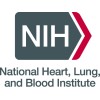Real Time 3-Dimensional Stress Echocardiography
Coronary Disease

About this trial
This is an interventional treatment trial for Coronary Disease focused on measuring Coronary Artery Disease, Ischemia, Ultrasound, Ventricular Function, Wall Motion
Eligibility Criteria
Patients older than 18 years of age with known or suspected coronary artery disease who agree to undergo stress echocardiography and have undergone or will undergo coronary angiography within 3 months of the stress echocardiogram. No pre-menopausal patients who are lactating, are pregnant or potentially pregnant as judged by history, physical examination, ultrasound or urine pregnancy test. No unstable angina. No recent myocardial infarction (less than 1 month). No ventricular ectopy during baseline conditions (i.e., couplets, frequent PVC's [greater than 6/min], early coupling ["R-on-T" phenomenon], ventricular bigeminy) that might potentially predispose the patient for the development of dangerous dysrhythmias during dobutamine infusion. No congestive heart failure. No significant hypertension (systolic blood pressure greater than 170 mmHg) or hypotension (systolic blood pressure less than 100 mmHg). No sinus tachycardia greater than 100 beats/min. No other acute medical illness. No atrial fibrillation, or inadequate two-dimensional echocardiographic windows.
Sites / Locations
- National Heart, Lung and Blood Institute (NHLBI)
Outcomes
Primary Outcome Measures
Secondary Outcome Measures
Full Information
1. Study Identification
2. Study Status
3. Sponsor/Collaborators
4. Oversight
5. Study Description
6. Conditions and Keywords
7. Study Design
8. Arms, Groups, and Interventions
10. Eligibility
12. IPD Sharing Statement
Learn more about this trial
